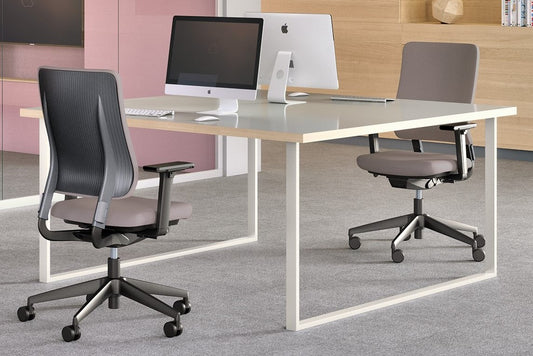The Definitive Working From Home Guide

Working from home: the FRISKA guide
There’s more to a great workspace than a great standing desk. Here’s our guide to creating a workspace that actively supports your productivity and well-being.
Once upon a time, we all used to turn up at our offices each day, sit at our desks and crack on, oblivious to what desk-based work was doing to us. Well-being was woo-woo. Health and safety was an annoyance. Ergonomics was possibly a baddie in Star Trek.
Fortunately, we now know better. The right desk. The right chair. The right atmosphere. The right amount of movement. They’re not just nice-to-haves. They make people more productive. They make people healthier. If you work for yourself and work from home, they help you work better. If your people spend some of their time working from home, the right workspace can help ensure more of them stay loyal.
So what should a homeworking set up look like?
Here’s our guide.
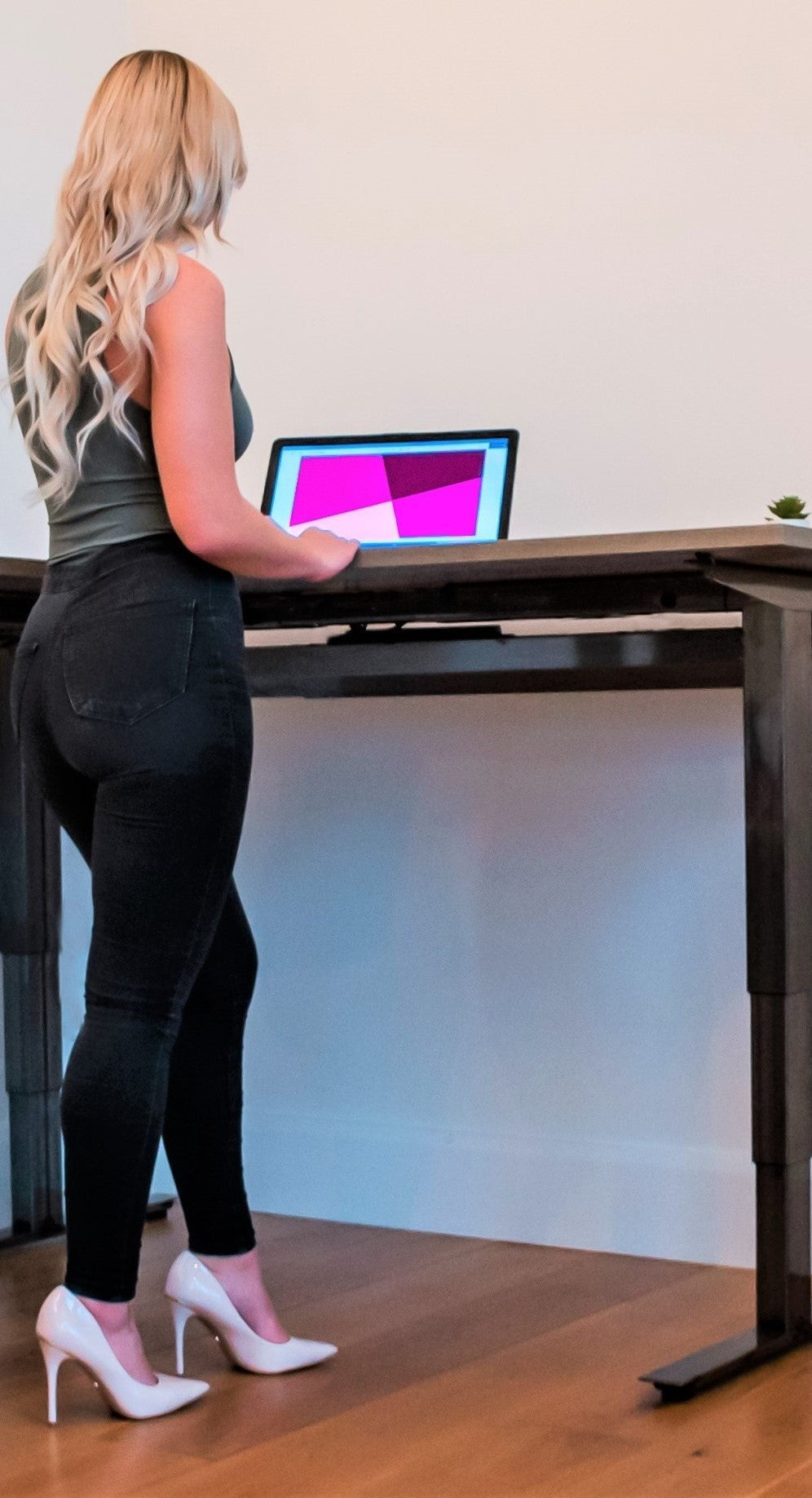
Is working from home/hybrid working better?
It depends what you mean by ‘better’. It also depends which study you read (we’ve read lots). Overall the evidence suggests that hybrid working can have a generally positive difference.
Productivity/retention
Does hybrid working improve productivity? Yes, scream some reports. No, shout others. Some suggest working from home improves productivity for a while but then things start to slip. Others suggest that it doesn’t do much for productivity until you stop remote monitoring staff quite so closely – then it works a dream.
The problem with lots of recent reports is they’ve drawn data from during the pandemic and the pandemic probably wasn’t the best time to reach an unbiased view.
So step forward Nicholas Bloom, Professor of Economics at Stanford University who has carried out numerous studies over the years and has reached what seems like a pretty sound middle position on the question.
In this BloombergUK article, he speaks about his study which found productivity rose 13% for people working from home, primarily because they spent more time working than sat in the car, on the bus or train. But he also refers to a separate study he was involved in which found productivity was largely flat. Staff retention, however, was much improved.
Happiness
Just as with productivity, you can find a big difference of opinion about this. Working from home can trigger depression, particularly in those already prone to it, finds this report (which notably comes from research carried out during the pandemic).
Meanwhile Cisco Systems carried out a major study and found hybrid working made 82% of staff happier.
The truth, it seems, may very much depend on the individual, the role, and whether a person is home working (that is, always at home) or hybrid working (that is, alternating between home and office). It certainly seems hybrid working can make some people happier.
Employee preference
According to this study, 85% of employees want a hybrid work model. Not every study is quite so conclusive, but even if you take the lower end of the results spectrum (this report quotes 45%) it’s still a lot of people who want (or want to retain) the ability to work at home and the office.
What every report appears to omit is that findings (whether they are about productivity, happiness, retention or something else) must be influenced by the quality of the home set up. If your home workspace is cramped, noisy and airless, the office will always feel like the better option.
What’s clear, is that for many, hybrid or home working can be a hugely positive experience. So how do you ensure yours is? Here are some crucial considerations.
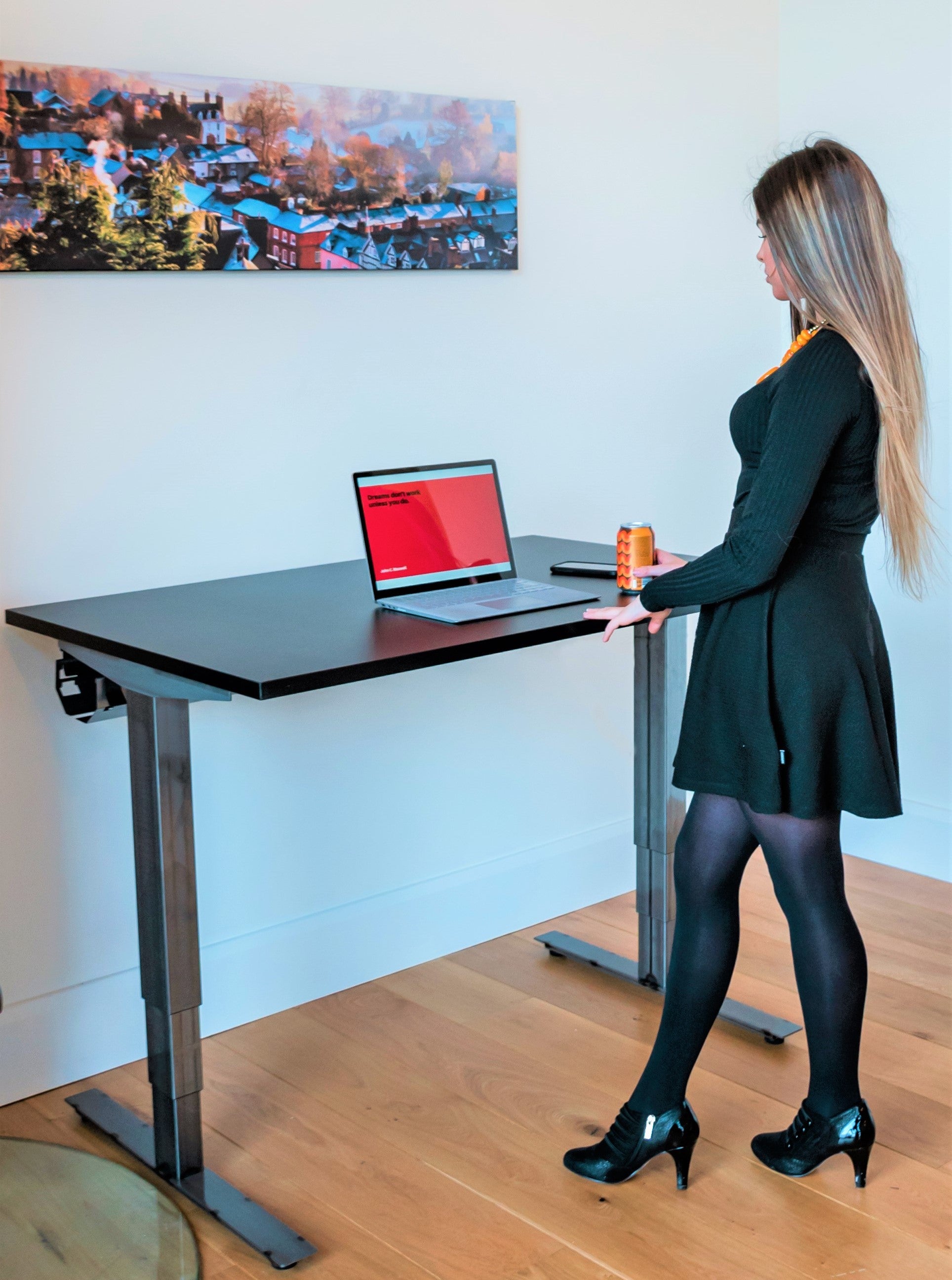
Optimizing your working from home setup: Desk
The benefits of a standing desk don’t come from standing. Not really. It’s the movement that’s important, the shifting between sitting and standing. We explore more about the benefits of movement here.
According to this paper, you should look to shift posture (from sitting to standing or vice versa) every 20-30 minutes.
But it’s not only your ability to move that makes a standing desk such a wise investment. Everyone’s desk needs to be a different height. What that height should be depends on how tall you are and what tasks you’re performing. As the HSE notes, a desk at which you spend your day writing, drawing or typing should be positioned up to 200mm higher than a desk at which you’re performing manipulative tasks, such as piecework, sewing, modelmaking or similar.
A FRISKA Stockholm has a movement range of between 595mm and 1.3 metres, so its better able to match your specific needs when sitting or standing.
The right size for your home
For many people, working from home presents one major problem: space. Often, the kitchen table has become the default workspace because it’s the only reasonable space – there’s simply not room to drop a mighty office desk anywhere else.
But what if the standing desk wasn’t quite so massively proportioned?
First, we created a range of micro desks with bijou proportions, designed to be brilliantly functional desks, just smaller.
Beyond that, every other FRISKA desk is available not only at our standard 80cm depth, but also a rather more slimline 70cm. When you’re a little tight for space, that extra 10cm can make a huge difference in your home.
Choose your FRISKA sit/stand desk here
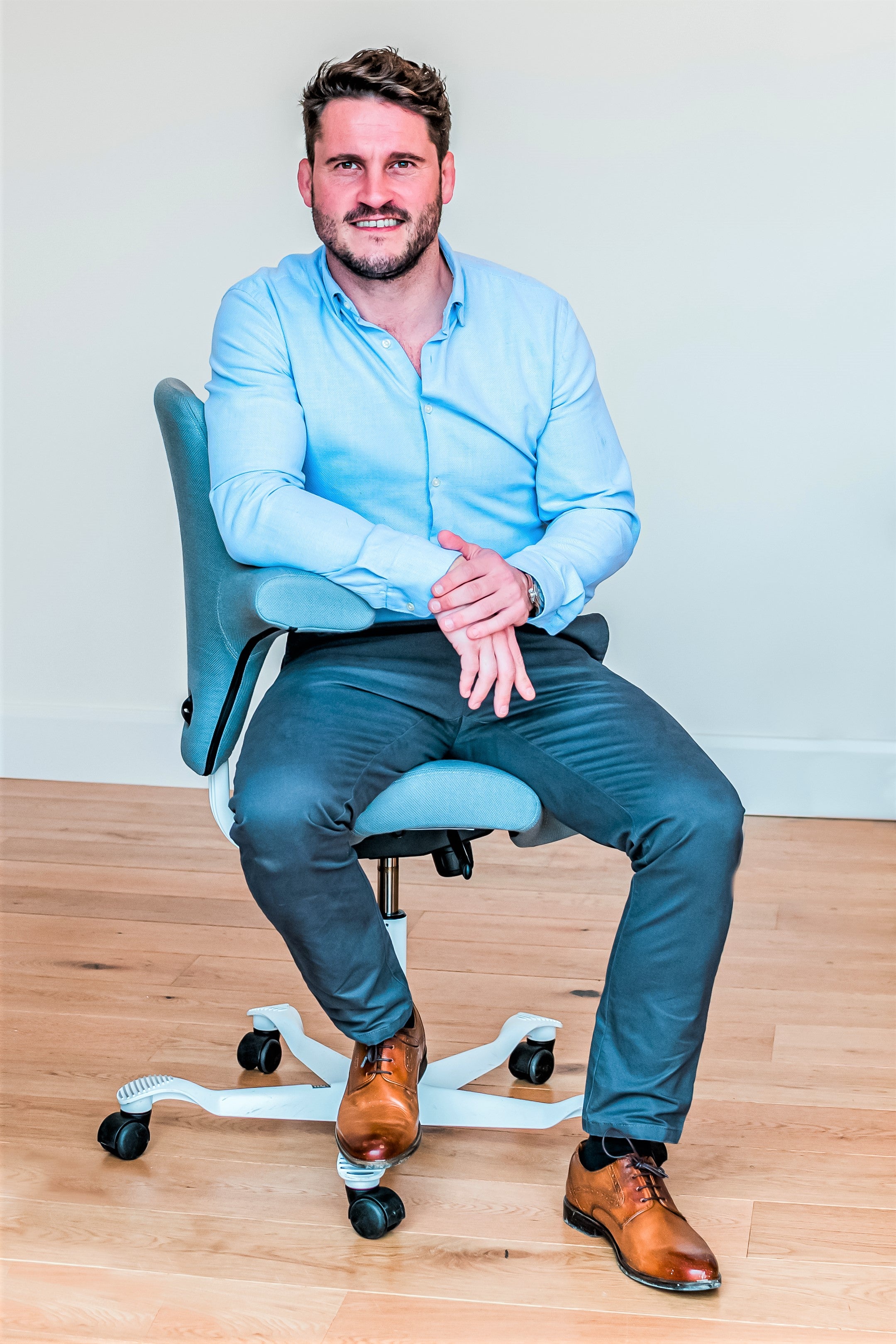
Optimizing your working from home setup: Chair
Yes, we’re a standing desk company. You might, therefore, find it a little strange that we talk about the benefits of a great chair.
But a good chair remains vital to a long and healthy working life. And that’s true even when you use a standing desk because the whole point of a height adjustable desk is to enable you to vary your posture and shift between sitting and standing. It’s not about forcing your to stay on your feet for the rest of your working life.
There have been lots of studies into the humble office chair – here’s just one report (snappily titled “the effectiveness of chair interventions in the workplace”), which looks at five different studies. It finds “a consistent trend that supports the role of a chair intervention to reduce musculoskeletal symptoms among workers who are required to sit for prolonged periods”.
How to assess whether your chair is suitable
Once again, the HSE is our bible. Their guide to seating at work lists the key factors in a seating assessment. These include:
- Is the chair comfortable for the intended period of use?
- Is the lower back adequately supported?
- Is the upholstery sufficiently supportive and comfortable?
- Does the chair have adequate types and ranges of adjustment?
- Is the height adjustable to allow work to be carried out at or below elbow height?
- Does the backrest adjust sufficiently in height and depth to allow the user to gain support?
Office chairs fit for a FRISKA
We don’t make chairs (frankly, we’re busy enough). But we’ve always dreaded the idea of someone investing in a wonderful FRISKA desk and then sitting at it on a lop-sided, posture-destroying office chair that should have been sent to the local tip years ago.
So we carefully selected some brilliant office chair manufacturers whose products more than pass the HSE’s tests, and which deliver exceptional performance in serious style.
Find an office chair fit for a FRISKA here
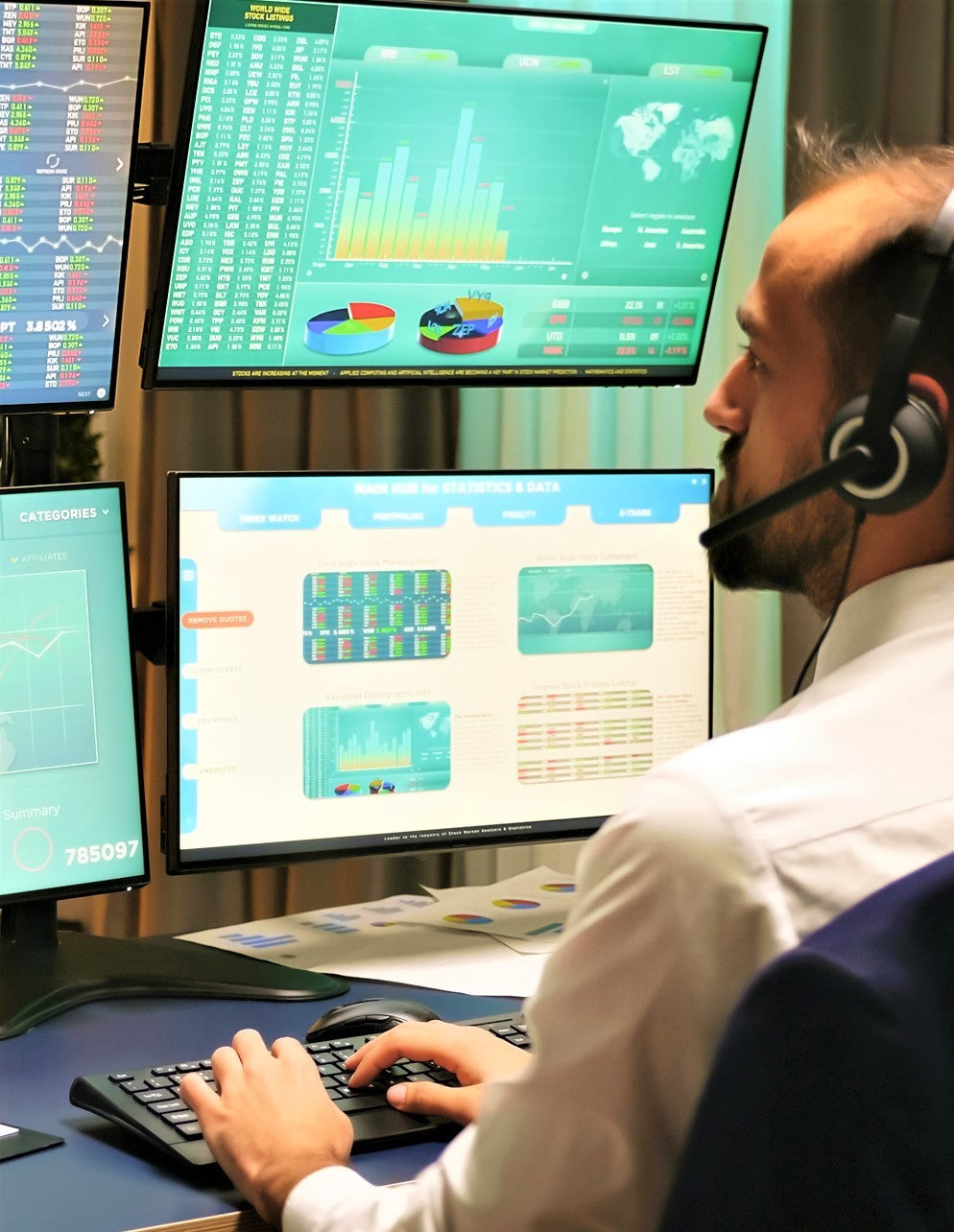
Optimizing your working from home setup: Monitor & Computer
For many employers, the biggest homeworking challenge came not in the early days of the pandemic when most workplaces closed. Rising to that particular challenge was, in the end, fairly simple because employees could simply ship even the bulkiest computers to workers’ homes.
No, the biggest challenge was – and remains – the part where we all went hybrid. Because the only way to ensure you can easily switch between home and office without lugging your desktop Mac onto the Tube every other day is with a laptop. When you work at a laptop all day, you tend to look down, using a smaller screen, with a less ergonomically-friendly mouse, a relatively unresponsive keyboard, and a focal length that is extremely short. None of which is ideal for your eyes, fingers or posture in the long term.
Even if you’re required to continue using your laptop as your work-from-home computer, connecting alternative monitor(s) and peripherals (keyboard, mouse) will make it a healthier and more productive workstation. If you don’t have access to a separate monitor, you should consider a laptop stand to raise the level of the screen, although you’ll definitely then need to plug in a separate keyboard and mouse.
- The top of your monitor should be level with your eyes and about an arm’s length away
- Your keyboard should be just below elbow height
- Your screen and keyboard should be in front of you (not to the side)
- Your mouse should be on the same plane as your elbow (so you’re not reaching down or up towards it
A monitor arm is the best way to ensure your monitor is at the right height, distance and angle to reduce glare. Used with a standing desk, it’s also the best way to eliminate ‘wobble’ from your screen.
Find monitor arms for your standing desk

Optimizing your working from home setup: Light
Generally speaking, our homes aren’t designed for working, so where you base yourself is frequently a matter of where the standing desk will fit. It’s often potluck as to whether the light there is beneficial to your productivity or a frustrating distraction, but there are lots of things you can do to tailor the light to your workstation.
The rules of thumb for light when home working are as follows:
- Take advantage of natural light but try not to place a window directly behind you to avoid screen glare (and the fact you’ll appear in silhouette to everyone on Zoom). A natural light source to the side of you is best because when you take a moment to look out of the widow you’ll be refocusing your eyes. To give your eyes a proper break, apply the 20-20-20 rule: every 20 minutes, focus on something 20 feet away for 20 seconds.
- Looking through a window to the side of you will also force you to shift position. As we explore here, movement is good.
- Whether natural or artificial, try to diffuse all lights that aren’t desk lamps through shades, blinds or screens. This will help reduce glare, reflections and shadows, and help reduce eye strain.
- If you can, reposition or switch off lights behind you so you don’t find yourself working in your own shadow.
- Use an articulated desk lamp to give you clear, bright task lighting.

Optimizing your working from home setup: Air
We’ve known for years that stale air makes an office less productive. It’s one of the main contributors to ‘sick building syndrome’.
So throw those windows wide open (or at least crack them open a little) when you can. When you can’t, consider an air humidifier as a way of keeping the air nice and moist so you can breathe more easily on hot, dry days, and so your eyes don’t dry out in front of a display screen—especially valuable if you wear contact lenses.
Occasionally, and if your humidifier is suitable, consider adding essential oils like lemon, rosemary or vetiver to aid concentration and focus. Or, for stressful days, add a few drops of lavender to help calm you.
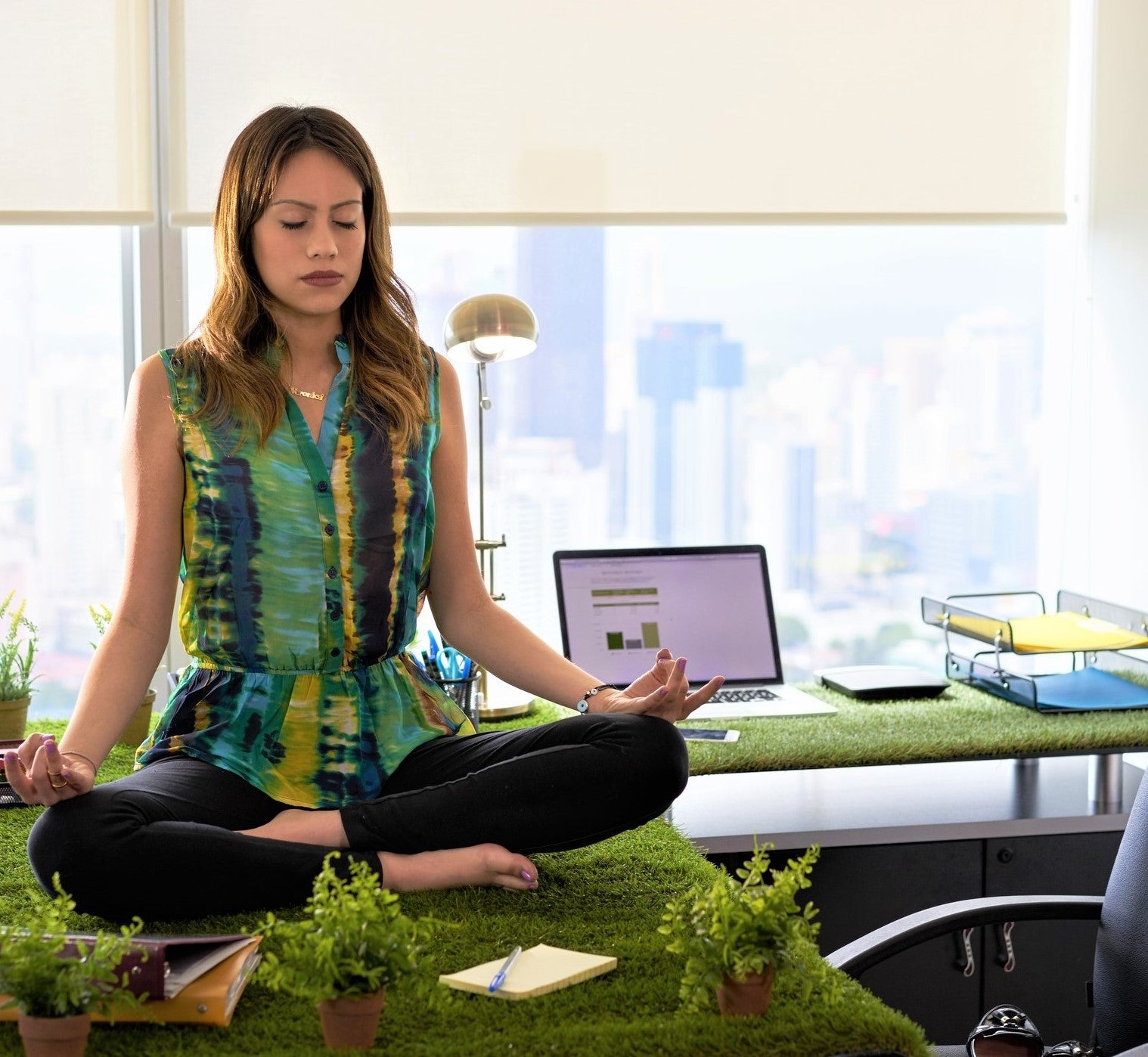
Optimizing your working from home setup: Plants and ‘stuff’
Minimalist offices produce miserable people. “Sometimes less is just less,” wrote the Guardian back in 2014, pointing to a study of the value of adding plants and other paraphernalia to your office environment.
It reported a study which found: “When plants were brought into the offices – one plant per square metre – employee performance on memory retention and other basic tests improved substantially.
"What was important was that everybody could see a plant from their desk. If you are working in an environment where there's something to get you psychologically engaged you are happier and you work better."
Finding “psychological engagement” is especially easy at home since it’s full of things that make you happy. So while you should avoid clutter, do keep a plant and the odd personal item in view.
Want to create a working from home setup that will make every day feel less like work? Talk to us.



